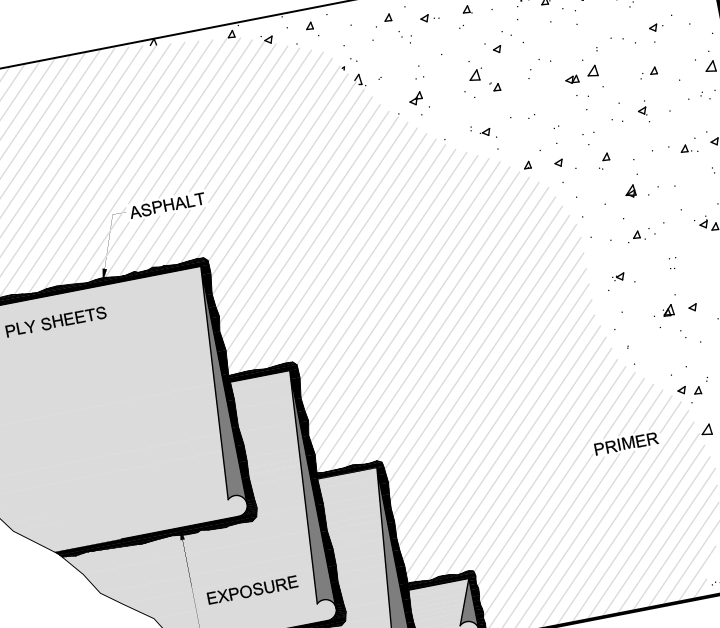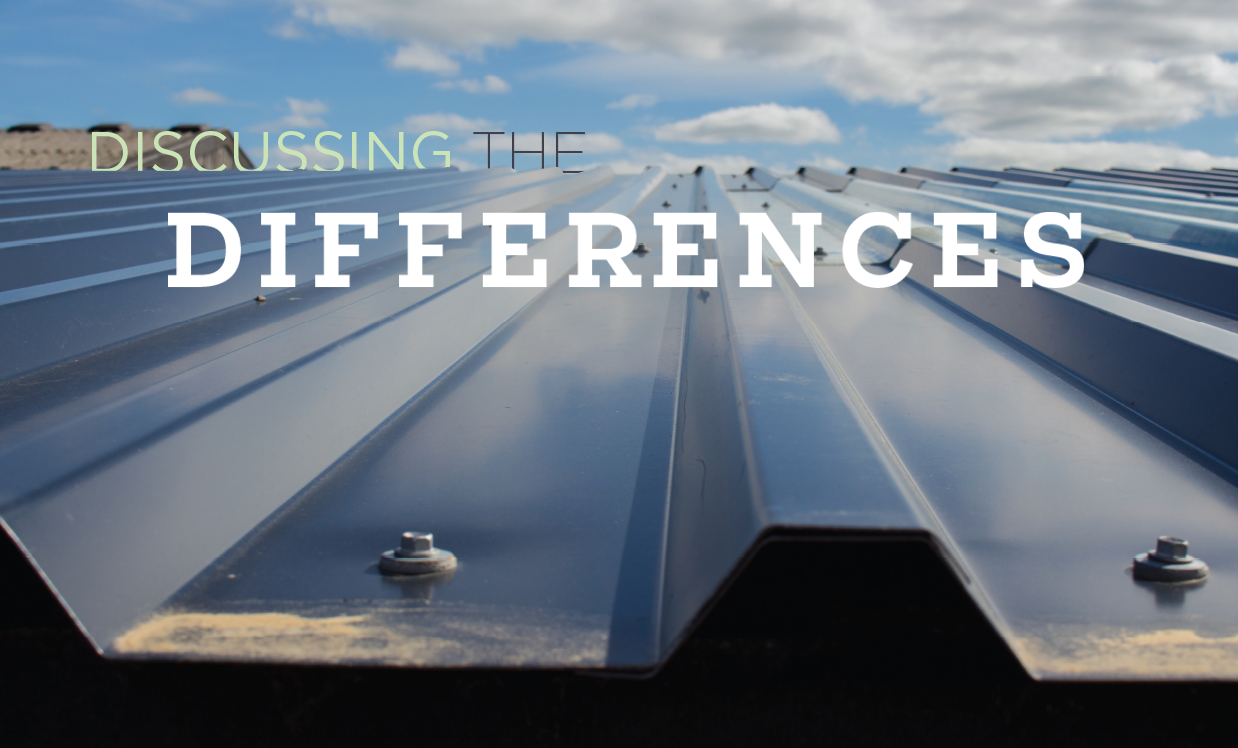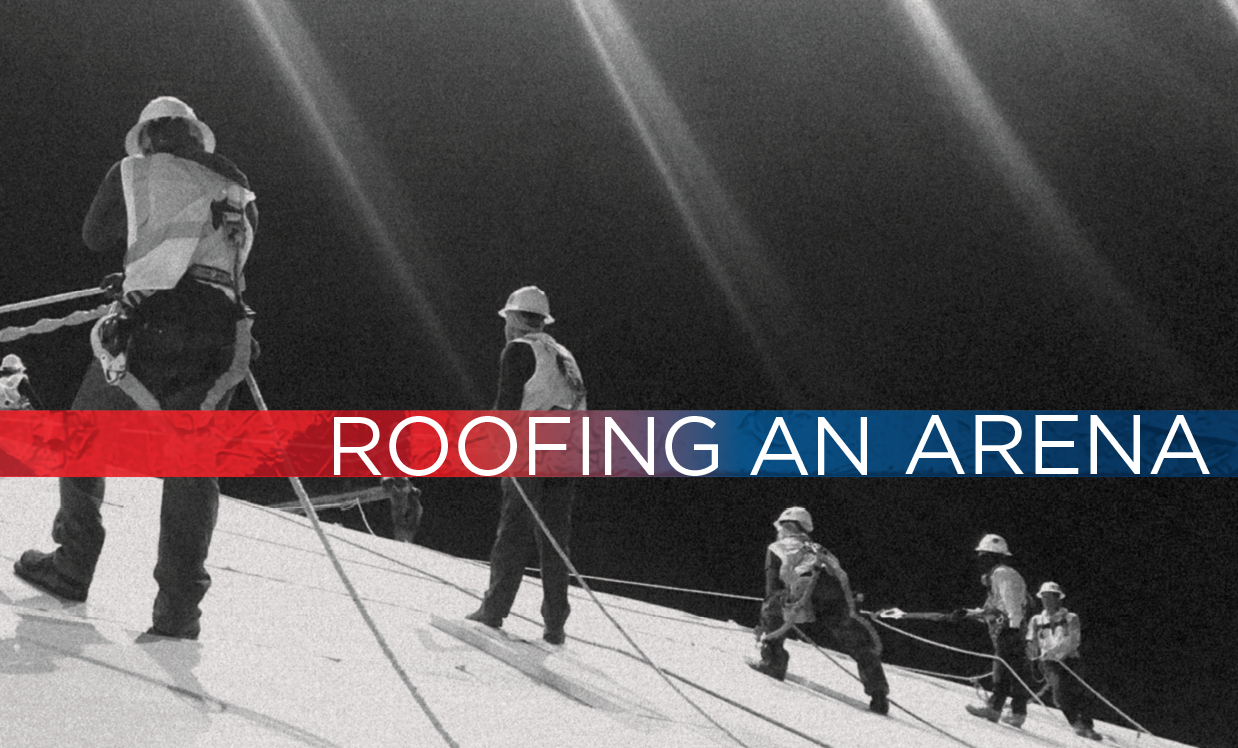
|
Many low-slope roof assemblies are designed without proper consideration of whether an impermeable vapor retarder layer is necessary to prevent moisture accumulation. In some instances, this results in unintended moisture accumulation within and possible premature deterioration of the roof system.
Following are guidelines designers should evaluate when considering whether to include a vapor retarder layer in their roof system designs to prevent unwanted moisture accumulation.
Self-drying roofs
Whether intentionally designed as self-drying, many low-slope roof assemblies are, in effect, self-drying; they are designed and installed without an impermeable vapor retarder layer within a roof assembly’s cross-section. As a result, there is little to no protection from moisture accumulation from a building’s interior. There also is little to no deterrent for a roof assembly to dry down when conditions are suitable.
A roof assembly without a properly placed vapor retarder layer generally will accumulate some moisture when environmental conditions on the building’s exterior are colder than the building’s interior. In this scenario, the direction of vapor pressure and moisture vapor flow is from the building’s interior toward its exterior into the building’s exterior thermal envelope, including the roof system. In North America, these conditions are most common during winter.
When the conditions are reversed (when the interior temperature is cooler than the exterior temperature), the direction of vapor pressure and moisture vapor flow is from the exterior toward the building’s interior. These conditions are most common during summer, particularly if a building is air-conditioned.
For a self-drying roof assembly to properly function, it needs to dry down the moisture accumulated during periods of accumulation. If conditions are such that a roof assembly accumulates more moisture over time than it dries down, NRCA does not recommend the self-drying roof concept and prefers a properly placed vapor retarder layer within the roof system’s cross-section.
NRCA guidelines
NRCA offers the following additional considerations:
- NRCA suggests a vapor retarder layer be considered for low-slope roof assemblies installed in Climate Zones 6A, 7 and 8.
- NRCA suggests a vapor retarder layer be considered for low-slope roof assemblies if the interior relative humidity is expected to be relatively high, such as with swimming pools, museums and specific manufacturing facilities.
- NRCA suggests a vapor retarder layer be considered for low-slope roof assemblies if the outside average temperature during the coldest month is below 40 F and the expected interior relative humidity during winter is 45% or more. A map showing the general region of the continental U.S. where the outside average temperature in January is below 40 F is provided in the Condensation and Air Leakage Control Section of The NRCA Roofing Manual: Architectural Metal Flashing and Condensation and Air Leakage Control—2018.
CRREL guidelines
The U.S. Army Corps of Engineers’ Cold Regions Research and Engineering Lab has vapor retarder criteria based, in part, on NRCA’s below 40 F and greater than 45% relative humidity criteria.
The CRREL criteria provide a U.S. map of interior relative humidities above which low-slope roof assemblies should include a properly placed vapor retarder layer within a roof system’s cross-section. This map shows a threshold range of an 80% indoor relative humidity in the far South to a 30% to 40% indoor relative humidity in the North.
CRREL’s map is based on a 68 F indoor temperature. For interior temperatures other than 68 F, CRREL supplies a correction factor graph.
The design decision
Whether a vapor retarder layer is needed as a component of a low-slope roof system is best-suited for a building’s mechanical system designer to determine. When sizing and designing a building’s HVAC equipment, the mechanical system designer needs to consider outside conditions specific to the building’s geographic location, climate conditions and desired interior design conditions. These same considerations form the basis for determining whether a vapor retarder layer is necessary for the building’s exterior envelope, which includes the roof system.
In the absence of the building’s mechanical system designer deciding whether a vapor retarder layer is necessary, this decision should reside with the building or roof system designer. The NRCA and CRREL guideline criteria are intended to provide designers with some roofing-specific guidance.
If a vapor retarder layer is deemed necessary for a building’s exterior wall assembly, the designer also should consider a vapor retarder layer as a roof system component.
The design decision on whether to include a vapor retarder layer as a roof assembly component typically does not reside with the installing roofing contractor.
Additional information about NRCA’s and CRREL’s guidelines for vapor retarder layer usage is provided in Chapter 2 of the Condensation and Air Leakage Control Section of The NRCA Roofing Manual: Architectural Metal Flashing and Condensation and Air Leakage Control—2018, which can be downloaded or purchased from nrca.net/shop.
MARK S. GRAHAM is NRCA’s vice president of technical services.
Information about proper vapor retarder layer placement within a roof assembly’s cross-section is provided in “Positioning is everything,” May 2021 issue.
This column is part of Research + Tech. Click here to read additional stories from this section.



